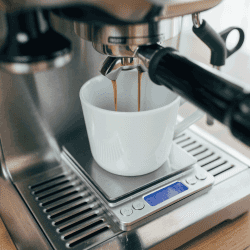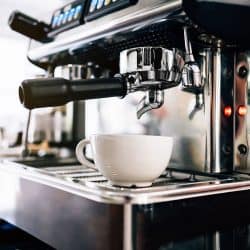Do you need to know what to do if your espresso machine's pressure is too high? Well, we have researched this topic and have answers for you. It is essential to know what to do if your espresso machine's pressure is too high to avoid bitter, acidic coffee.
If your espresso machine's pressure is too high, try using coarser ground coffee. You can also try reducing the amount of coffee or applying less pressure when packing your coffee. If these suggestions don't work, you may need to replace the pressure regulator valve.
In this article, we will learn what to do when your espresso machine's pressure is too high. We will also learn about other interesting related questions like, what is the correct brewing pressure for espresso, and why does my espresso machine keep exploding. Keep reading to learn more.
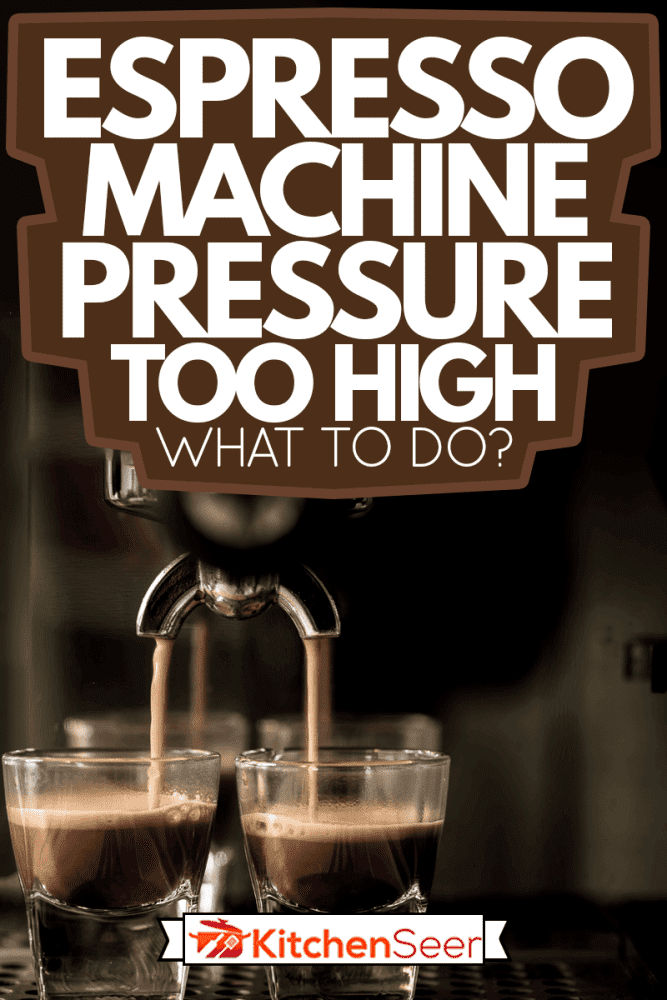
Espresso Machine Pressure Too High—What To Do?
Making espresso is an art. Espresso machines balance many conditions to ensure a tasty cup of espresso. If the pressure gets too high, however, it can cause your espresso to become over-extracted, leading to a bitter, acidic taste.
There are two reasons that the pressure may be too high in your espresso machine. The most likely reason that the pressure is too high is that your espresso machine has to work too hard to force water through your coffee. You can try a few tricks to make it easier for water to flow through your coffee.
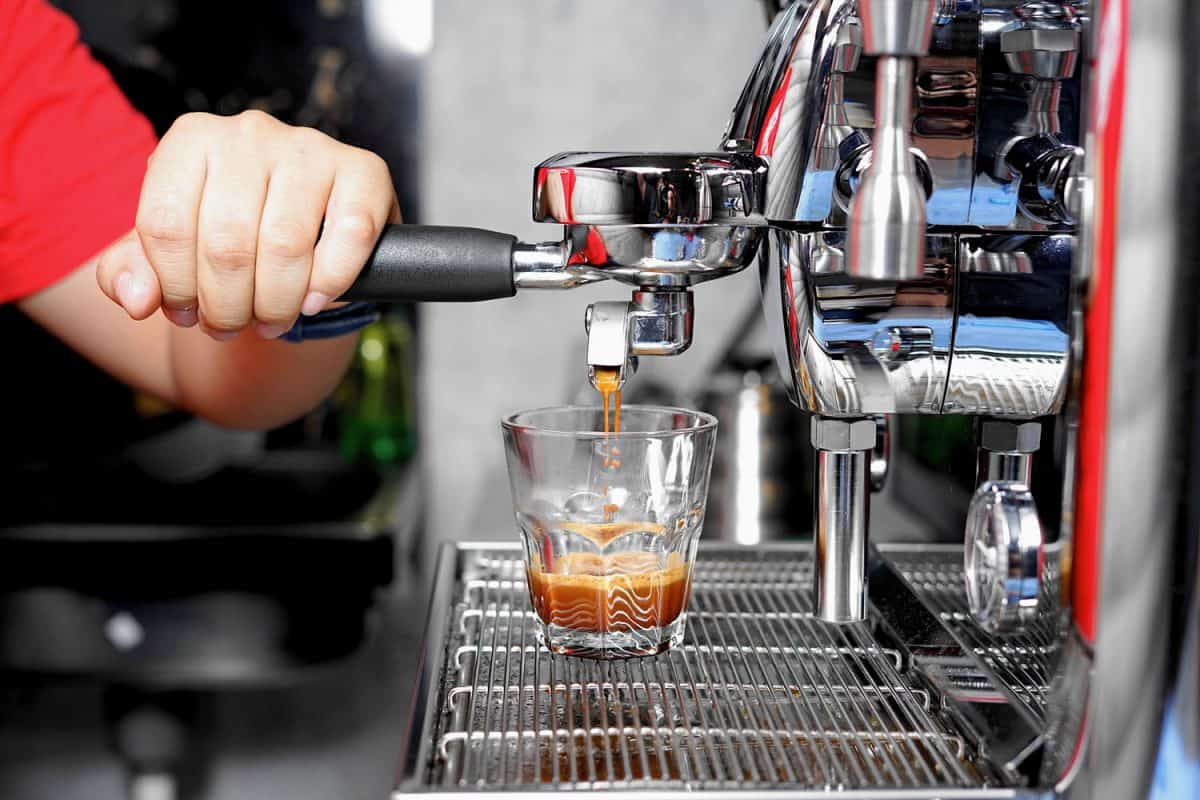
The other reason that pressure may be too high in your espresso machine has to do with the pressure regulator. The pressure regulator is a device in your espresso machine designed to keep the pressure consistent. If this device fails, you may get sudden bursts of pressure leading to inconsistent espresso.
We will first cover the tricks to increase water flow, and then if those tricks don't work, we will tell you how to know if it's the pressure regulator.
Use Coarser Ground Coffee
The first thing you should try to decrease the pressure in your espresso machine is to use coarser ground coffee. When your coffee is ground too fine, it may make it difficult for water to flow through it.
If it is difficult for water to flow through your coffee, it may cause the pressure to build too high. With a coarser ground coffee, water will find it easier to flow through, reducing the pressure.
Use Less Ground Coffee
Another reason water may be having a hard time flowing through your coffee is that there is too much. If there is too much coffee, your machine will have to work very hard to get water through the coffee.
To remedy this issue, use less ground coffee. This will make it dramatically easier for water to flow, reducing the pressure.
Pack Your Ground Coffee Less Hard
When you put your coffee into your espresso machine, you may be packing it down too hard. If you compress the ground coffee too much, it may be difficult for your machine to force water through your coffee.
The solution is to pack your ground coffee less hard. Water will flow through easier, making your espresso machine work less hard and reducing the pressure.
A Failed Pressure Regulator
As mentioned before, if your pressure regulator has failed, it may cause excessive pressure in your espresso machine. If you tried all of the other solutions and found that none of them have worked, there is a chance that your pressure regulator has failed.
A way you can tell the difference between your machine having a hard time forcing water through your coffee or your pressure regulator failing is the pressure consistency. If your machine has difficulty forcing water through your coffee, the pressure will be consistently high. A failed pressure regulator causes inconsistent pressure that sometimes bursts into your cup.
If your pressure regulator has failed, you will need to replace it. Once replaced, you will find your espresso machine will work, and you will no longer have excessive pressure.
How Does Espresso Machine Pressure Work?
When an espresso machine is used to make espresso, it first needs to pressurize the water. There are two basic methods that an espresso machine uses to build pressure.
High-end espresso machines use a rotary pump to deliver constant pressure to the boiler. A rotary pump is a device that uses a mechanical disk to apply continuous pressure.
Domestic espresso machines typically use a vibration pump which uses electricity to push and pull a piston, generating pressure. While this type of pump only delivers pressure when a shot is drawn, it does make the price much lower than an espresso machine with a rotary pump.
Now that the water is under pressure, it is sent to the boiler, heated, and sent to the coffee to make your espresso. Without the proper pressure, your espresso machine will not make a good cup of espresso. We will now discuss what the correct brewing pressure for espresso is.
What is the Correct Brewing Pressure for Espresso?
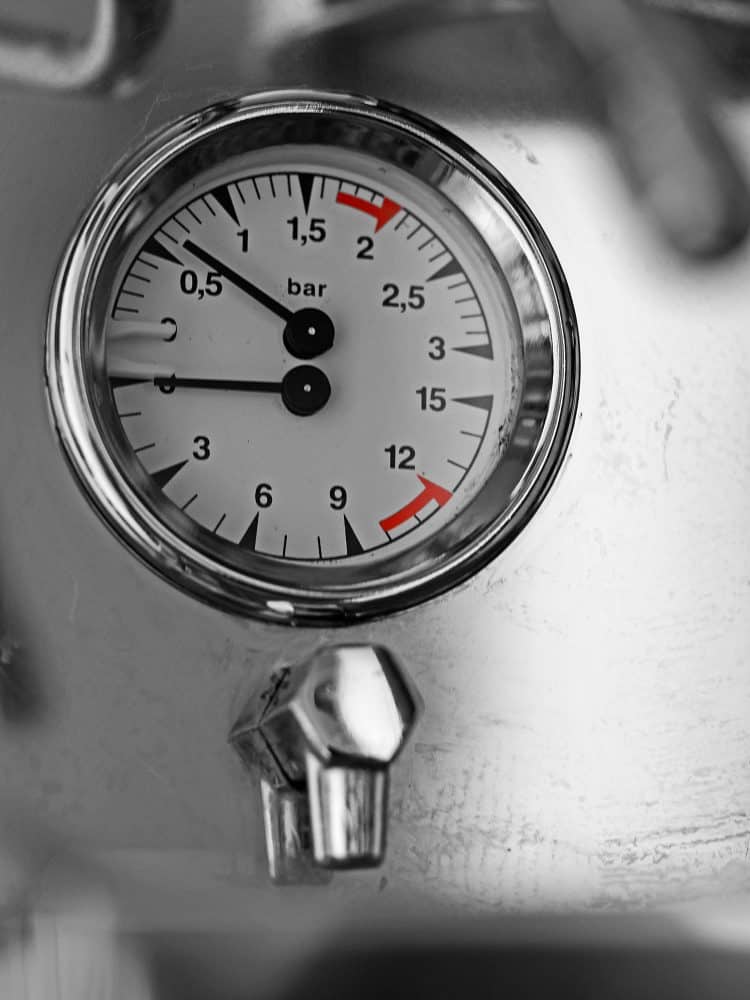
Many factors affect the taste of your espresso, and none is more critical than pressure. Pressure affects how much coffee is extracted per second and how long it takes to draw a shot.
If your pressure is too high, you may over-extract your coffee leading to undesired bitter flavors in your drink. If your pressure is too low, you may end up with a weaker and less sweet espresso. The trick to an excellent flavored espresso is the correct pressure, but what pressure is that?
There have been many tests regarding the best pressure for espresso, but most coffee connoisseurs agree that 9 bars of pressure is the sweet spot. A bar is a measurement of pressure equal to atmospheric pressure at sea level.
To give you an idea of how much pressure 9 bars is, a car tire at 36psi is equal to 2.5 bars. All this pressure can lead to your espresso machine exploding in the right conditions. Here's why your espresso machine may explode.
Why Does my Espresso Machine Keep Exploding?

Espresso machines operate under high pressure. This pressure is designed to be handled by the machine but, sometimes excessive steam is produced. The main reason excessive steam is produced is a faulty steam boiler.
If excessive steam is produced, the espresso machine has a fail-safe, the pressure release valve. This device is designed to release excess steam to prevent pressure from building to dangerous levels: however, this device can become clogged, preventing steam from escaping.
If pressure can't escape out the pressure release valve, you can have a catastrophic failure where the pressure will explode out of the machine. This steam that is released quickly can burn you, so it would be best to prevent this if possible.
The solution to an exploding espresso machine is to clean or replace the pressure release valve. This will keep steam from exploding out of unexpected places on your espresso machine. While cleaning or replacing the pressure release valve will make the steam release safer, it won't fix the problem.
To remedy the main issue, you will need to fix the steam boiler. The most likely reason your steam boiler produces excessive steam is a faulty pressure regulator. This device ensures consistent pressured water is delivered to the steam boiler.
These pressure regulators aren't too expensive to replace, and once you do, your espresso machine will stop exploding.
How Hot Do Espresso Machines Get?
One of the other critical factors that affect the taste of espresso is temperature. Coffee experts have found the ideal temperature range to ensure a perfect brewed espresso. This ideal temperature range is between 190 and 196 degrees Fahrenheit.
At this temperature, your espresso will be neither under-extracted nor over-extracted. A perfect level of extraction will give you a fantastic flavored espresso.
Double boiler espresso machines have a separate boiler for steam which starts to form at 200 degrees Fahrenheit. So the highest temperature your espresso machine should ever be is 200 degrees. If your espresso machine becomes hotter than 200 degrees Fahrenheit, your temperature regulator may be broken, and you should turn off your machine and have it serviced to avoid injury.
If you find that your espresso machine doesn't make espresso as hot as it once did, it may be that calcium is blocking the heating coil. Over time calcium can build up on the heating apparatus reducing its effectiveness. To remove this calcium run a descaler through your espresso machine every few months.
With the heating coil cleared of calcium deposits, your espresso will once again be at the perfect temperature.
Final Thoughts
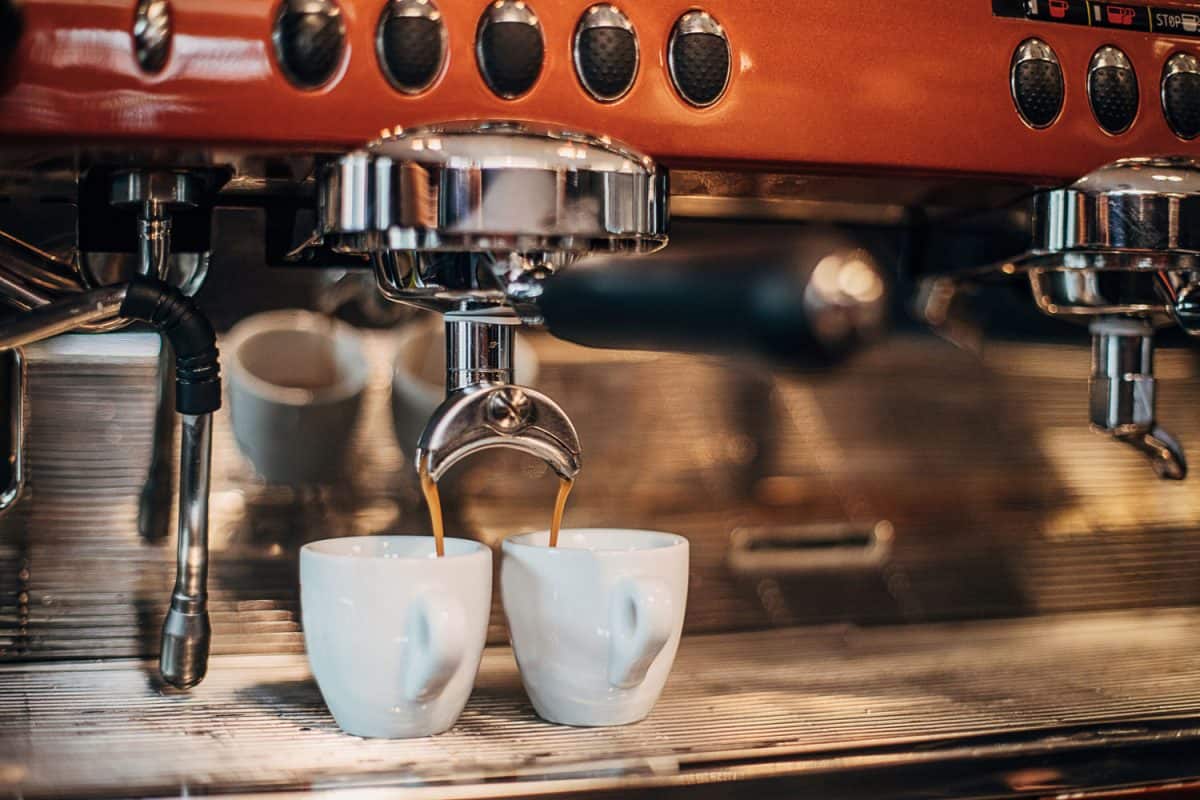
In this article, we learned that if your espresso machine's pressure is too high, you can adjust your ground coffee to make it easier for water to flow through. We also learned the best pressure for extracting espresso is 9 bars.
Also, remember to keep your pressure release valve clean to ensure your espresso machine never explodes.
We hope you enjoyed this article. If you want to learn more, check out some of these other posts.
Can An Espresso Machine Explode?
What Kind Of Coffee To Use For Espresso Machine

